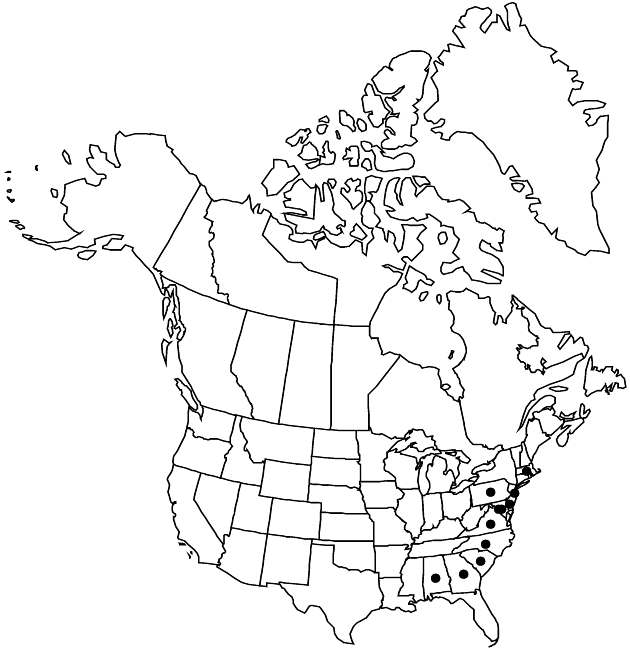Vernonia glauca
Sp. Pl. 3: 1633. 1803.
Plants 6–10+ dm. Stems sparsely appressed-puberulent, glabrescent. Leaves mostly cauline; blades lanceolate to oblanceolate, 10–15(–18+) cm × 30–45(–70+) mm, l/w = 2.5–3.5(–4), abaxially scabrellous (hairs awl-shaped), resin-gland-dotted or not, adaxially glabrous or sparsely puberulent. Heads in corymbiform to paniculiform arrays. Peduncles 2–35 mm. Involucres ± hemispheric, 5–8 × 7–8 mm. Phyllaries 40–60 in 5–6 series, sparsely puberulent to tomentulose, glabrescent, margins ciliolate, the outer lance-deltate to subulate, 1–3 mm, inner oblong, 4–7+ mm, tips acuminate to subulate or filiform. Florets 30–45+. Cypselae 3–4 mm; pappi stramineous to whitish, outer subulate scales or bristles 30, 0.5–1.5+ mm, intergrading with 30+, 6–8 mm inner subulate scales or bristles. 2n = 34.
Phenology: Flowering Jul–Sep.
Habitat: Dry fields, marshes
Elevation: 10–400 m
Distribution

Ala., Del., D.C., Ga., Md., Mass., N.J., N.C., Pa., S.C., Va.
Discussion
Selected References
None.